HuntTheNorth.com’s
Canine Corner
CONDITIONING YOUR RETRIEVER FOR THE UPCOMING SEASON
Dr. Eric Ruhland shines a light on the large thing walking behind you, and it’s not your shadow.
Centuries before we walked the earth our ancestors domesticated canines for the sole purpose of putting more meat on the table. Today meat is not the primary reason most of us go afield, but the premise behind what we do has not changed. Man and dog still work together. As dog owners and hunters it is our responsibility to optimize the genetic ability of our dogs. When my dogs’ feet hit the field I want them at the top of their game. This goal not only leads to a healthier bag, but also a healthier dog and healthier bond between hunter and his four legged companion.
We cannot simply expect our dogs to take the field on opening day with no prior preparation. On opening day many of us have seen our dog charge the field excitedly, only to have him dragging behind an hour later. How embarrassing. A man would never walk to the starting line of a marathon without jogging a few miles first, and neither should your dog. I’m not saying you and your dog should run a marathon. What I am saying is that opening day preparation for your dog begins long before September. To me there are a few simple steps to getting your dog prepared. These steps will make it more likely to see less of your veterinarian, and more of your dog come opening day.
Please note that any phase of this program should be preceded by a visit to your local veterinarian, to rule out any preexisting conditions that may put your dog at risk. Any lameness or bouts of inactivity experienced in this workout should also be evaluated by your veterinarian.
Step 1: Evaluate your dog’s body condition score (BCS)
Body condition score is a range from 1-9 (9=severely obsess and 1=emaciated) and takes into account bone density and muscle mass of a dog, not just their weight.
First step- Put your hands on your dog. Can you easily feel his ribs, spines of the vertebra, and hip bones with mild pressure (BCS 4)? Are they covered in a two inch layer of fat (BCS 8)? Can you SEE your dog’s ribs and spine (BCS 2)? Notice I don’t say anything about weight. This may be easier than it sounds but it is the single most important thing you can do and is often overlooked. If you do not feel comfortable assessing your dogs BCS ask your veterinarian when the time comes for annual physical/shots.
Overwhelmingly the largest problem facing most of our dogs is that they are too fat. If your dog is obese a good goal for weight loss is 2-4% body weight reduction per month. Anything over that is considered risky. This is the phase of training when I DO use a scale to check the weight and the percentage we are loosing every month. It is important to recognize that this Step of pre-hunt conditioning be done before true conditioning and workout phases can begin. Also understand that this phase of conditioning may take some time. If your dog is 15-20 pounds overweight, it may take 4-5 months to get your four legged monster ready. Those winter months when most of your buddies’ dogs are packing on the pounds should be when your pup is leaning down, if he isn’t lean already.
Step 2: Intro to Conditioning
It is ideal to have a dog at a BCS of 4-5 before this phase, however slightly obese dogs can begin light conditioning. In this phase I will stress again and again; do not push your dog. DO NOT push your dog. DO NOT PUSH YOUR DOG. This is the introduction phase. Keep it fun, light, short. Food intake will NOT increase during this phase, so don’t fall into the trap of feeding your dog more! This is a great time for both of you to get off the couch and do something together. You can begin this at any time but if true hunting conditioning is your goal, you do not want to begin any later than mid July. These are short 10-20 minute sessions held 4-5 times per week. Light running, walking, and swimming are ideal. Simple, get out and get moving.
Starting off with an excersize program early in the summer can be most beneficial for late season hunting. Make it fun in the beginning and progress into a more extensiove program as needed.
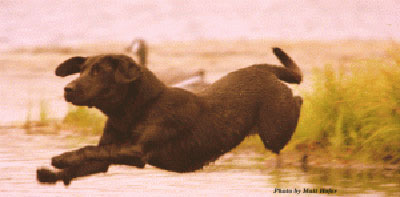
STEP 3: True conditioning
Now is the time that we start to crank up the miles and build from what we have done earlier. You may notice at this point that your dog no longer gets tired from his usual routine and his energy levels seem higher. In this phase our target is to build muscle, cardiovascular supply, and endurance. In this step you may increase your dog’s food intake but be careful NOT to overfeed. Only increase the food if you think your pup is getting too lean. On a good day of upland hunting you may be in the field anywhere from 3-6 hours, we need him ready for such days. This phase consists of 4-6 workouts per week ranging from 45-60 minutes. These days will be broken into 2-3 speed training days, and 2-3 conditioning days. Speed days look to build muscle, and conditioning days look to build endurance.
SPEED DAYS: You can still do your usual 20 minute routine as before but now we add in more time, and more speed drills. I like to do speed drills in the middle of a workout. A dog that is not warm will pull a muscle and a dog too tired will blow a ligament. After a 10-15 minute warm up, in the middle of a workout do 10-15 minutes of all out throwing bumpers. This is what some trainers call ‘fun bumpers.’ I throw as fast and far as possible. When my dog gets back at heel I immediately throw and send him. Trust me, your pup will be gassed in 15 minutes, and so will your arm. This is speed training. Slowly increase speed training until you can do this for 20-30 minutes. After the ‘fun bumper’ session continue with conditioning for another 15 minutes.
CONDITIONING DAYS: Conditioning days are simple, keep your dogs pace and heart rate up for at least 45-60 minutes, whatever you need to do it. Just be careful of heat, and be sure to give water breaks ever 15 minutes. Some trainers like to use the term ‘roading for ultra conditioning. Roading is the use of trucks or ATV’s to condition dogs, and I neither recommend nor condone its use. Optional ways of ultra conditioning without roading is the concurrent use of swimming, bumpers, and jogging, in that order to minimize risk and optimize gains. The key is to gain 5-10% of the workout per week. Your dogs muscle will respond to the stress you put on it, it just takes time and consistency.
Step 4 Off Season
The off season for dogs and professional athletes (not much difference) is more important than many people give credit. For most of us in the Midwest this is January-May. All of the work you have done will be lost if your pup lays around every day and does not workout for another 5 months. It is critical to continue LIGHT workouts 1-2 times per week to maintain muscle mass and cardiovascular supply. This is a great time to go to the game farm. The off season is also a time for the body to heal lagging ligament and tendon injuries which take weeks to heal so don’t push dogs during this time. Also be sure to adjust food intake for workouts. If your dog needed more calories during hunting and conditioning seasons then bring the food back to maintenance levels during this down time.
Key Points to General Dog Conditioning
Be sure your dog is healthy enough to begin training
Evaluate your dogs body condition score (BCS) and be realistic with yourself
Adjust food intake for your dogs BCS needs.
Give yourself plenty of time
Keep workouts fun and safe!
Again, if you are thinking about starting a conditioning program for your dog be sure to see your local veterinarian first. They will be able to answer any particular questions you may have. The above are simply general recommendations and may not apply to your dog. The most important thing to remember is to keep workouts and training fun. Our four legged beasts are only with us for a limited time, and we need no better excuse to spend more time with them. Use your passion for hunting to get you both off the couch. Believe me, when your dog’s feet hit the ground this opening season, you won’t be sorry.
Until next time, here is to birds in the air and a steady dog at your foot.

Dr. Eric Ruhland
Photos supplied by Northernplainsretrievers.com
Click Here To See All Of Our Endorsed Gun Dog Service Providers Here:Gun Dog Services
Pro Retriever Trainers | Pro Pointer Trainers | Labrador Retriever Breeders | German Shorthair Breeders | Chesapeake Bay Retriever Breeders | English Pointer Breeders | Golden Retriever Breeders | English Setter Breeders

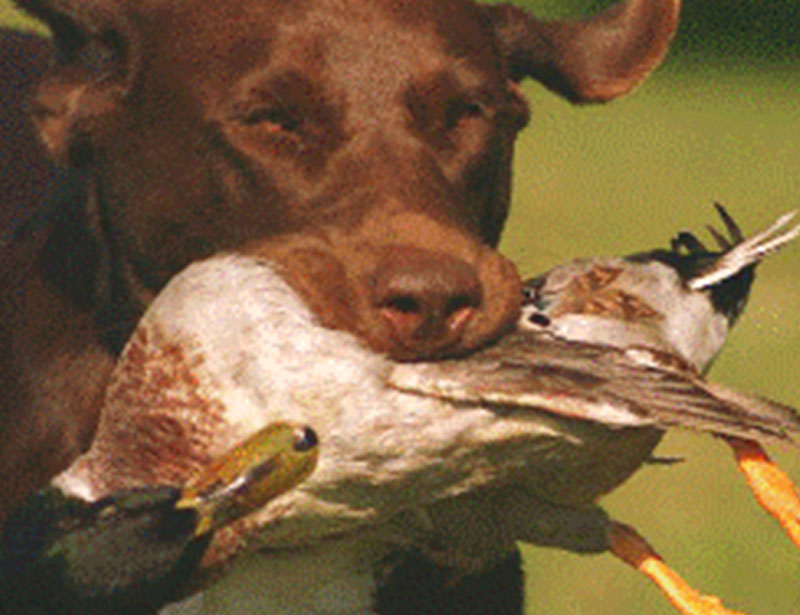
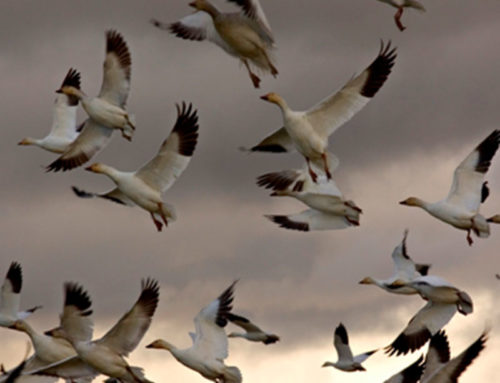
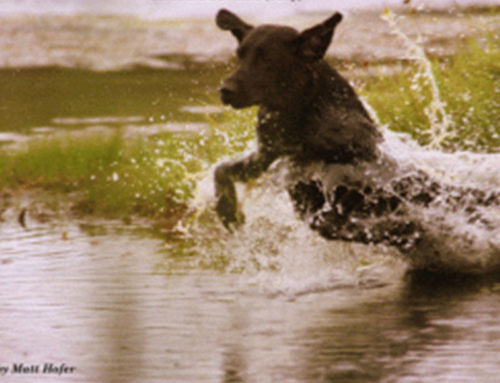
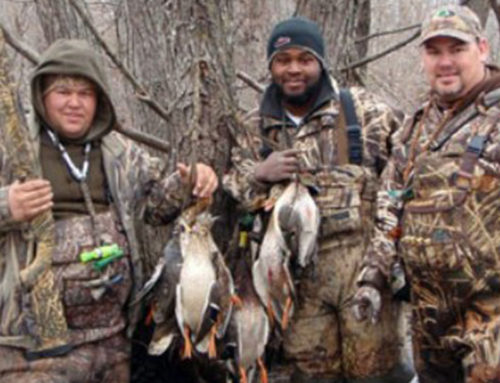
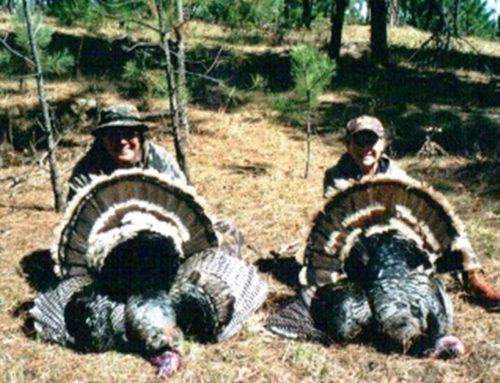
Leave A Comment